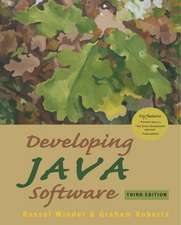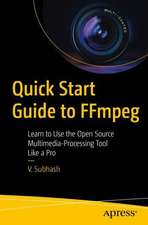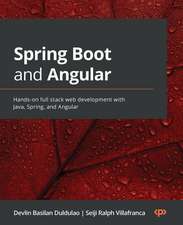Domain-Driven Design with Java - A Practitioner's Guide
Autor Premanand Chandrasekaran, Karthik Krishnanen Limba Engleză Paperback – 19 aug 2022
Preț: 237.31 lei
Preț vechi: 296.64 lei
-20% Nou
Puncte Express: 356
Preț estimativ în valută:
45.42€ • 47.24$ • 37.49£
45.42€ • 47.24$ • 37.49£
Carte tipărită la comandă
Livrare economică 15-29 aprilie
Preluare comenzi: 021 569.72.76
Specificații
ISBN-13: 9781800560734
ISBN-10: 1800560737
Pagini: 302
Dimensiuni: 191 x 235 x 17 mm
Greutate: 0.57 kg
Editura: Packt Publishing
ISBN-10: 1800560737
Pagini: 302
Dimensiuni: 191 x 235 x 17 mm
Greutate: 0.57 kg
Editura: Packt Publishing
Notă biografică
Premanand Chandrasekaran is a technology leader and change agent, with a solid track record of leading large technology teams and helping businesses deliver mission-critical problems while exhibiting high internal and external quality. In the past two decades, he has had the pleasure of helping a variety of clients and domains, including financial services, online retailers, education, and healthcare startups. His specialties include technical innovation, architecture, continuous delivery, agile/iterative transformation, and employee development. When not fiddling with his trusty laptop, he spends time cutting vegetables, cooking, playing video games, and analyzing the nuances of the game of cricket.






















